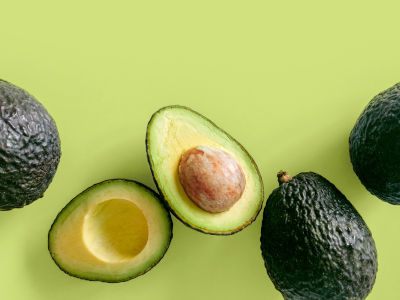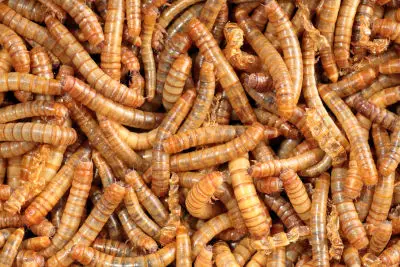What is a Brown Anoles Lifespan?
Brown Anoles (Click here to see why Anoles love these substrates) are great little pets, especially when they are well looked after. Their Life expectancy can be dependant on a number of factors that I plan to address in this article.
What is a Brown Anoles Lifespan? On average brown anoles will live for 5 years. However this really depends on how well you treat them in captivity. They require specific heating, lighting and diet specifications for them to avoid any life threatening health conditions.
| Are these foods dangerous for your Beardie? | |
| Avacado? Click here to learn, from this guide, if this food is dangerous |  |
| Superworms? Click here to learn, from this guide, if this food is dangerous |  |
Now that you know how long they should last, let me explain what you need to avoid and what you need to do to keep them happy and fulfil their expected lifespan.
What is the Brown Anole?
Brown Anole (Anolis sagrei), another introduced species of lizard. https://t.co/Kp5T2gXWud pic.twitter.com/7BcGRpcFDq
— Morgan Hughes (@TheReremouse) December 20, 2018
The brown anole is native to Cuba and Bahamas and is a brown coloured anole lizard. Its scientific name is Anolis Sagrei, however it is also known as the Bahaman anole.
Primarily it’s colour is brown, however it does have some black and tanned colours on it’s body.
How does captivity affect the lifespan of your brown Anole?
I will now discuss with you how captivity can affect your brown anole. Firstly in captivity housing of the brown Anole can make a massive difference to its happiness and longevity of his life.
There are a few factors which can affect its housing happines:
- Heating
- Lighting
- Diet
- Sharing with other lizards
Heating
Heating issues can cause major problems with your brown anole. They require a very specific heating requirement to keep them happy and healthy. I will talk more in detail on this in the next section, however this can be a big factor for the longevity of their life.
Lighting
Lighting is another big issue which can cause problems if it is not correctly laid out. In particular UVA and UVB lighting is essential. They need this to aid their calcium levels.
Sharing
When it comes to sharing it is important that you get the correct mix of lizards. Get this wrong and you will have a major problem o your hands.
Mixing can cause a number of different kinds of related issues. Firstly if we just focus on their own specie only, you have to be careful with how you mix the genders. If you have more than one male in your enclosure, you will face territorial issues and fighting for certain.
Sharing with other Anole Species
Some people attempt to mix the Brown Anole with other Green Anoles. Their assumption is they are pretty much the same, just the difference of colour. However in reality there is quite a difference.
In particular, their behavior. With experience, you will notice that the brown anole is likely to be more dominant and will overpower the Green Anoles. Initially this might be quite subtle, but there will be long-term issues.
Such as the Green Anole being pushed away from basking areas, meaning they get starved of the necessary UVA or UVB lighting. Also simple day-to-day tasks such as eating can be an issue. You may find that they are also getting pushed away and start to become underfed.
Sharing with other Lizard Species
Other lizard keepers have also attempted to mix brown anoles with Geckos. This can also be a problem because the geckos can be quite aggressive. Also, the sleeping pattern for some geckos is very different to a brown anole.
For example, some geckos are nocturnal. Meaning their activity is during the Night-Time hours, when the brown anoles are sleeping. You may find that your brown anole lizards are literally getting trampled on in the night. This will obviously cause them some major health issues. And may even cause a reduction in their life expectancy.
What can you do to improve their life expectancy?
Now that we have covered some of the issues that can affect the life expectancy of a brown anole. I now want to discuss what you can do to improve their life expectancy. In particular I will be covering housing improvements, such as providing the correct substrate, cover, space, lighting, etc.
Correct Substrate
Firstly let’s talk about the substrate. To keep your your them happy it’s important to get the right substrate. If you have a healthy and happy lizard, there is a good chance that there will be breeding happening.
With the assumption that you’re mixing males and females. In this case it’s a good idea to have a good soil-based substrate. This is great because it’s a natural substrate. It is also handy when it comes to planting live plants.
The additional benefit of this is that you can pot the plants directly into the substrate, without having to have a separate container for them. Whenever they lay their eggs, they can burrow and dig into the soil and keep the eggs safe.
Providing the correct cover and space
You will find that your brown anole will really appreciate some good cover and space. Therefore, if you are using live plants, it will appreciate hiding around them. It will also appreciate other accessories such as bark.
One tip to know, if you are using plants in the enclosure, is to make sure that there’s nothing toxic on the plants. This can then pass on to your lizard and cause health issues. It also may reduce its life expectancy.
Heating and lighting requirements
I’m going to explain the heating a lighting requirement to keep your brown and all happy.
If you have multiple Anoles in your enclosure you need to have at least two or three basking spots. They really do appreciate these basking areas and it is important for their health and wellness.
This is also mimicking their natural environment, where they will have multiple options to bask. You will also find that some of them will group together on one basking spot.
The best way to achieve this is to have lighting which has UVA and UVB and place these lighting fixtures approximately 8 inches away from the basking areas, to get the optimum light rays to them.
For this you will need a 60w bulb to achieve the ultimate light and the basking areas should reach up to temperatures of around 95 degrees Fahrenheit. You should also be providing a Cooler area which goes anything from 75 up to 85 degrees Fahrenheit.
You can also consider swapping out the 60w spot bulbs with a UV light instead, however I must warn you that this can work out to be quite expensive. If your budget is not an issue then go for it, however if you would like to reduce costs there is a better way.
Instead of these UV bulbs you can actually get a UV heat strip and attach it to the length of the enclosure. Make sure it’s the full length of the enclosure and it has reflectors to make sure that the lighting is reflecting in the right direction.
However if you are using UV bulbs it is important that you replace them every 6-8 months, to make sure that they are emitting the correct lighting. Do not wait until they blow, just replace them on a regular cycle to maintain the correct lighting.
With regards to heat mats or heat rocks it’s probably not a good idea to use these they are not really the natural behaviour of the brown anole and and if there is a requirement to have extra heating during the night and infrared bulb will be more than adequate for this.
Related Questions:
Will baby Anoles drink from a water dish? No, baby Anoles prefer to drink from droplets faling from live plants in the enclosure. If you provide water dish, the chances are it will get ignored.